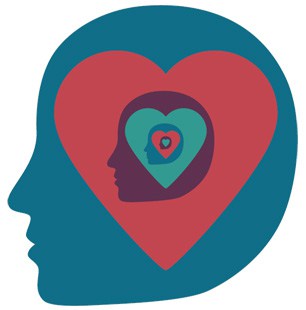
A few people have asked us recently if we’re trying to produce an official “five-a-day” from the Mindapples research. There are a lot of different lists of recommended actions for our mental health, and many offer interesting talking points. We don’t want to add to that pile by producing yet another set of five things everyone “should” do. We don’t want to take the results, analyse them scientifically and give you back an objectively “true” set of findings. We’re taking a more artistic approach.
My friend Tom Stafford says that Science is the study of “measurement, comparison and average”. The classic scientific approach to the mindapples data would be to measure and compare the data and take the averages, find the common ground between all the responses. For example, if 10% of the responses mention ‘reading’, we could count those responses, take a view that they are all comparable, and then assign an average value to it which represents the common ground between them. If we do that enough, we can tell you “the second most popular activity is reading” (which it is).
But how can we take an average of the responses without also taking a view about what defines them, intepreting them on some level? If someone says they like “reading comics quietly in the dark before bedtime”, is that a vote for “reading”, or “comics”, or “quiet”, or “darkness”, or just “doing something quiet before bedtime and sleeping better”? We select what we consider important about the results, and give you back the blandest summary we can to create the impression of agreement. It’s true, but it’s not very interesting. If you want to recommend something that everyone should do, the answer will almost always be a compromise.
But we do want to recommend you five things to do for your mental health. We just don’t think it has to be the same five for everyone. We want to help you find your own way, and we’re planning on doing this in three ways. First, take the test and think about it for yourself. Second, browse other people’s responses and get inspiration from other people who think like you. And thirdly, we’ll release all the anonymous data for you and anyone else to analyse, slice up, present visually and use to make your case for what you think is important. The way we analyse the data is as personal and varied as the answers we gave in the first place – and who knows what beautiful patterns and stories you could make with it?
That’s the artistic approach to research. We aren’t looking for the truth: we already have it. We have a huge pile of things that work for real people, and that’s the most important thing. Rather than trying to boil these truths down into something simple enough to be communicated scientifically, let’s use artistic tools to communicate a more complex and engaging truth, and celebrate our minds as the messy, mysterious, beautiful things they really are.
